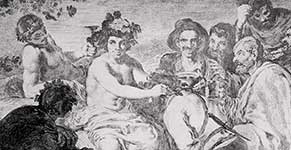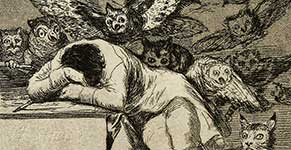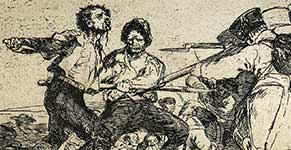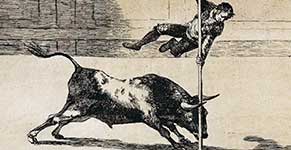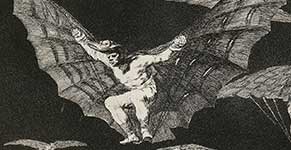Goya’s etchings
The museum displays all the major series that Goya etched between 1778 and 1825: Copies after Velázquez (1778), Caprichos (1799), The Disasters of War (1810-1815), Tauromaquia (1816), Disparates (1816-1820) and The Bulls of Bordeaux (1824-1825). Each series is a milestone in the process of research and creation within this art, in a desire for constant artistic improvement and openness to modernity.
Goya is one of the great printmakers, not only for technical reasons, but for thematic ones as well. The artist dominated all printmaking techniques of his time (etching, aquatint and drypoint), achieving the convergence of several of these techniques in a single print. In 1825, at the age of 79, he began experimenting with a new technique, lithography, but his genius lie in his complete layouts and perfect match of technology and content. Etching was the escape valve for Goya’s thoughts and feelings. It was the most direct and democratic way to connect with his contemporaries, helping it out of the stagnation that it suffered in the 18th century.



